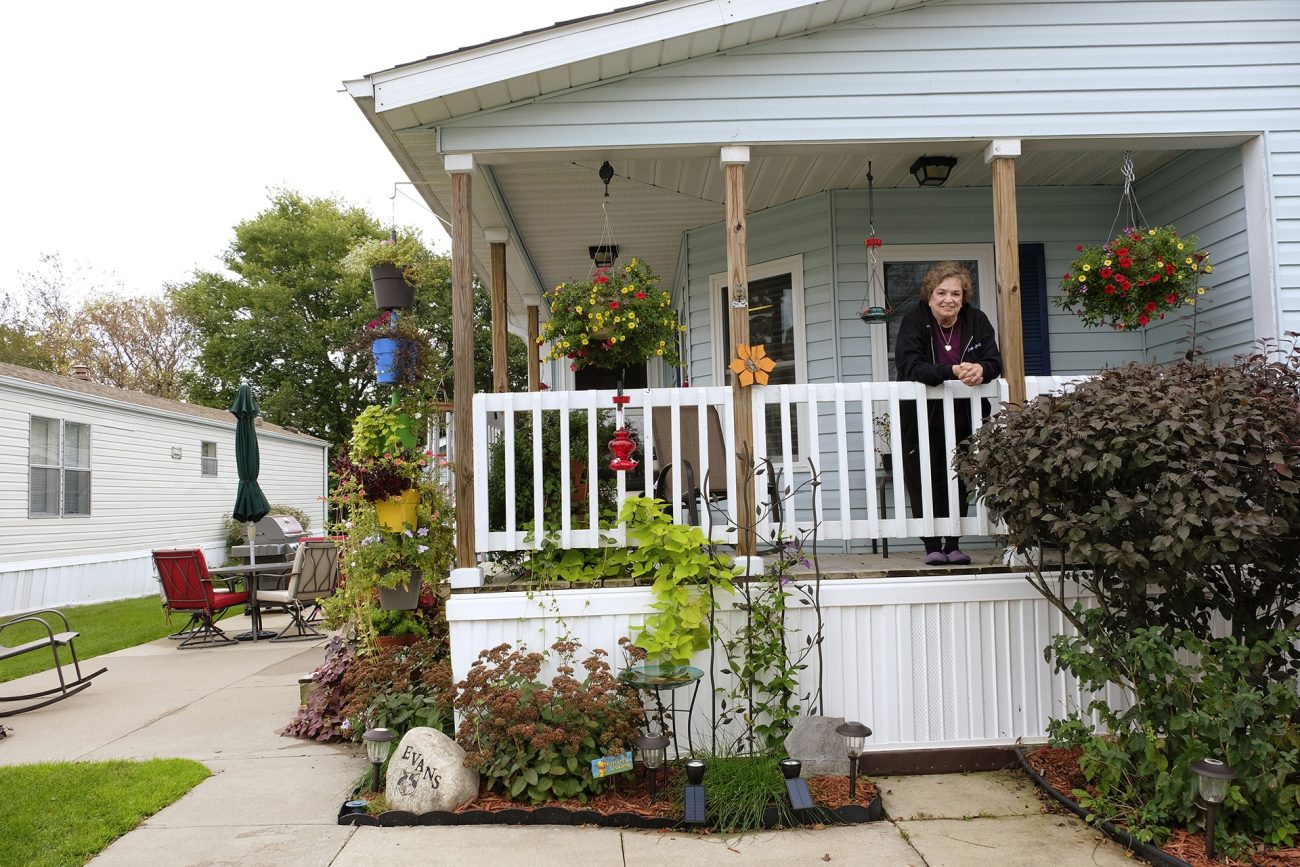
Photo by SDI Productions, via iStock
I am a licensed real estate agent in the District of Columbia, Maryland, and Virginia.* One time, I took white clients to an open house in my hometown of Silver Spring, Maryland, where the agent welcomed us before turning away a Black couple behind us, saying the house was already sold. Another time, a seller’s agent all but refused to present my buyers’ offer because they were a same-sex couple. Traveling across the region, I also saw how identical and nearby homes could have wildly different values because they lay on opposite sides of school district boundaries or county lines.
For much of the 20th century, practices like these were commonplace among real estate agents, brokerages, and their trade associations. For decades, the real estate industry explicitly worked to create and preserve segregated neighborhoods, locking out people of color from well-resourced communities and playing a key role in perpetuating the racial disparities we see today in everything from net worth to life expectancy.
I joined the industry five years ago as an urban planner seeking a side hustle and curious to learn how to make housing more affordable and accessible, and quickly discovered some of the ways these troublesome practices persist. However, the industry is also changing, and trying to make amends.
Real estate professionals at the local and state levels have finally begun learning about their industry’s history and they are seeking ways to make housing fairer and more equitable. Black, Asian, and Latinx agents who had been learning about this history began sharing it, and their own experiences of discrimination, with colleagues. As the industry’s impulse to own up to its past discrimination grew, the national conversation about housing began to shift: Last fall, the National Association of Realtors (NAR), the nation’s largest trade association, representing 1.4 million real estate professionals, issued a public apology.
Farrah Wilder is the first chief of diversity, equity, and inclusion for the California Association of Realtors (CAR), the nation’s largest NAR chapter. She describes the industry as “a reflection of our country.”
“There was a lot of government and real estate agent complicity in segregation,” Wilder says, but adds, “If you know your history, you can move forward with a better understanding of the situation we have today and what might be the solution.”
A Role in Redlining
That history is not hard to find. The American real estate industry was built on discrimination. The National Association of Real Estate Boards (a precursor to the National Association of Realtors) required it in their Code of Ethics, written in 1924: “A Realtor should never be instrumental in introducing into a neighborhood a character of property or occupancy, members of any race or nationality, or any individuals whose presence will clearly be detrimental to property values in that neighborhood.”
At all levels, real estate professionals worked to create a system in which white homebuyers were privileged above everyone else. Agents and appraisers assisted the Home Owners’ Loan Corporation, set up by the federal government during the Great Depression, in creating redlining maps of major American cities that marked Black neighborhoods as ineligible for home loans.
Local real estate associations had their own racist policies: D.C.’s Real Estate Board, for example, dictated that “no property in a white section should ever be sold, rented, advertised, or offered to colored people,” and Chicago-area Realtors urged homeowners to insert racial covenants in their contracts preventing sales to non-white buyers.
Exclusion was built in to new communities as well. Around the turn of the 20th century, developer Francis Newlands and his Chevy Chase Land Company bought up 2,000 acres in the Washington, D.C., area. He built and marketed homes on the land and constructed a privately owned streetcar line to serve them, along with shopping centers, a country club, and a resort, all exclusively for white people, buffered from Black neighborhoods by a national park.
Newlands, a senator from Nevada, wanted to repeal the 15th Amendment, which gave Black people the right to vote, as he considered them a “race of children” unfit for democracy. Every home he sold contained covenants barring sales to non-white buyers, and ads promised those covenants would “protect property holders against the encroachment of undesirable elements.” When a group of entrepreneurs attempted to sell lots within Chevy Chase to wealthy Black families, Newlands’ company drove them out. A statue of him still sits in a traffic circle in Chevy Chase Village, today one of the nation’s wealthiest communities. To this day the village is less than 1 percent Black.
To enshrine these segregated neighborhoods, the industry also promoted exclusionary zoning. The concept of single-family zoning was first invented by a Berkeley, California, developer and real estate agent who wanted to keep a Black-owned dance hall out of a white neighborhood.
In 1950, the National Association of Realtors dropped the rule officially requiring agents to discriminate by race, changing that part of the code to “a character of property or use which will clearly be detrimental to property values in that neighborhood.” But the organization still fought against local and state fair housing laws in the ’50s and ’60s, the Fair Housing Act of 1968, and expansion and enforcement of the Fair Housing Act through the 1980s, arguing that they infringed on homeowners’ rights to select their neighbors, and on a consumer’s choice to select a racially homogeneous community. NAR didn’t become supportive until the 1988 amendments to the Fair Housing Act.
The industry also continued to quietly encourage discriminatory practices. In California, real estate brokerages had unspoken rules about refusing to show property in white neighborhoods to Black homebuyers, and would fire agents who broke those rules. The multiple listing service in San Leandro, then majority-white, refused to share listings with agents in adjacent and majority-Black Oakland, ensuring that potential buyers from Oakland wouldn’t know what homes were available in San Leandro.
Reckoning with History
Half a century after the National Association of Realtors unsuccessfully tried to fight the Fair Housing Act, the gap between white and Black wealth continues to grow. While white households were able to recover some wealth after the Great Recession, Black households continued to lose money. Black homebuyers are more likely to receive predatory loans, and homes in Black neighborhoods are valued at up to 65 percent less than identical homes in white neighborhoods. All of these contribute to a cycle in which white families can build generational wealth, while families of color get trapped in a cycle of debt.
But the understanding of these problems and their ongoing effects was changing among the members and staff of the very organizations that once perpetrated them. Wilder, a former civil rights attorney and licensed agent, had noticed for a couple of years that her colleagues were becoming more interested in their history, but says interest really took off after a 2019 Newsday investigation of Long Island brokerages uncovered agents explicitly steering white, Black, and Asian homebuyers to different communities. The investigation “dispelled a lot of myths about how segregation happened,” she says, especially the idea that racially homogenous neighborhoods are all self-selected or happen accidentally.
‘I hope it signals to other parts of the real estate industry that they can reflect, they can change, they can become better partners.’
Some agents formed book clubs, reading texts like The Color of Law that laid out in detail the real estate industry’s role in racial discrimination. Over 1,600 agents from around the country have joined a Facebook group called “Deliberatively Fair Housing,” to discuss their experiences and potential solutions. Janet Dorsey, chair of the California Association of Realtors Fair Housing and Diversity Task Force, is one of them.
“We began having these conversations among ourselves and trying to figure out what we can do,” she says. “Where in real estate can we make an impact? Let’s look at what we’re presenting to the public.”
That led to a Fair Housing and Discrimination Advisory, which was released in October 2020. CAR recommends that all buyers and sellers in California review and sign it before entering into an agreement or contract. It identifies discriminatory behaviors and describes “positive practices” that agents should follow, while educating clients on the state’s fair housing laws and treatment they should expect. It’s “a reminder that you have this active responsibility to not participate in discriminatory activity,” Dorsey says.
Individual brokerages are also working to educate their staff. Troy Cotton, associate marketing manager at Compass in Berkeley, wrote an open letter to his colleagues following the murder of George Floyd describing his experiences as a Black real estate professional. That led to a firm-wide series of conversations called “Let’s Talk About Race” on topics including voting rights, women’s rights, and Asian-American experiences, Cotton notes.
“It was giving folks in our company an opportunity to share our experiences and make [colleagues] aware of the experiences we face as Black people and people of color,” Cotton says. In his letter, he describes being “on high alert every day of my life” because of the risk of being racially profiled on the street or pulled over by a police officer. The meetings, held every six weeks for several months following the murder of George Floyd, were attended by around 150 people from Compass offices across the United States, including corporate-level decision-makers.
Brook Baird, a broker associate in Cotton’s office, says events like this put into context the segregation she saw in her hometown of Richmond, California. “It’s not an accident that neighborhoods became like this,” she says. “But I didn’t know the exact details. I hadn’t had somebody lay out the way it translates into the disparities now so clearly.”
“We’ve never seen this level of reflection in the big established powers in real estate,” says Alex Schafran, visiting scholar at the Institute for Metropolitan Studies at San José University. “And the Realtors, as one of the most organized, are one of the most powerful. I hope it signals to other parts of the real estate industry that they can reflect, they can change, they can become better partners.”
Getting Below the Surface
Fair housing laws were designed to address discrimination by making it illegal to talk about race. For example, agents cannot specify a preference for a certain race in home listings. They’re also forbidden to answer a buyer’s questions about the demographics of a neighborhood. Even a statement like “this home is near a popular Chinese restaurant” could be construed as discriminatory. Unfortunately, that can enable behaviors that might look race-neutral, but still discriminate. Buyer “love letters” can share personal information in the hopes of winning a bidding war, but can feed into the seller’s implicit biases, for example. Valuing homes based on comparable sales doesn’t take into consideration the way Black-owned homes or Black neighborhoods have already been devalued and so perpetuates historical patterns. Until recently, Facebook even allowed real estate ads on the site that were so specifically targeted that members of entire demographic group might not even see them.
It’s also hard to talk about race in an industry where not doing so is a core part of compliance training. Some agents were at best skeptical about discussing racial discrimination, perhaps because they didn’t know the history. Others were more resistant. “It is hard when folks have been told to be colorblind,” Wilder says. “Talking about demographics is something you’re not supposed to do.”
John Yen Wong, chairman of the Asian American Real Estate Association and a licensed broker in California for 40 years, notes that it’s easy for some agents to be complacent because they see people of color in the industry—but that doesn’t fix the underlying issues. “You think we’re already diverse. We have these Asian leaders and African-American leaders,” he says. “You don’t dig deep into the underlying issues.”
Instead, there’s a temptation to focus on more cosmetic changes. Industry groups across the country have banned the term “master bedroom” to describe the largest bedroom in the house because it may carry a racist or sexist connotation, preferring “primary bedroom” instead.
“I support people trying to eradicate that from the real estate lexicon,” Cotton says, but adds “those sorts of phrases don’t bother me as much as how can we get Black people into those homes?”
Becoming a Force for Good
Translating awareness into action is challenging. Baird took her experiences as an agent, coupled with a desire to address the displacement she saw in her community, to work at an affordable housing nonprofit. When she resumed her real estate career, she got involved with programs that give closing cost assistance grants, which can cover local taxes and requirements that buyers pay for sewer and sidewalk repairs at closing. Those closing costs are “a big financial barrier,” she says. “It falls heavily on people who don’t have a lot of cash up front.”
Cotton, who creates branding materials for agents and their listings, notes that individual agents have some power to make the industry more or less equitable. “The clients you’re helping or not helping is a direct relation to laws and covenants that were enacted to keep people in and out of neighborhoods,” he says. “I want [agents] to go out of their way to have a Black client.” He also wants them, when they’re working with white clients, to be careful “not to say things like ‘I wouldn’t go into that neighborhood’ because that’s code for ‘there are too many Black people and it’s not safe.’”
As a person of color, it’s validating to see the entire industry starting to acknowledge these practices and where they came from, because it might actually cause these behaviors to change. “The real impact of Realtors is in the day-to-day management of the real estate industry,” says Schafran, “and this is where I’m most hopeful. This is people sitting down to figure out how to change practice. We sometimes forget as housers that the whole point of changing policy is to change practice. I hope the experience that people have in the housing market will change, because the actors are changing.”
Industry groups don’t have to wait for all their agents to get on board however, to start making things right in a systemic way by working on the policy. At least in California, there’s been notable progress on that front, with Realtors stepping up to lobby for laws that could undo segregation and contribute to racial equity, including overturning laws that Realtors helped pass in the past. This has special urgency in California, where a chronic housing crisis has resulted in increased homelessness, skyrocketing home prices, and an exodus to neighboring states with cheaper housing. In the past, Realtors have resisted attempts to increase housing supply or build affordable housing, fearing it would hurt property values.
“We have a massive affordability and supply issue and it’s because of some of this red tape that we helped put in place,” Wilder says.
The California Association of Realtors has been trying, for example, to overturn Article 34, which voters added to the state constitution in 1950 and requires a referendum for any community to allow low-income housing. CAR’s predecessor, the California Real Estate Association, pushed for the law, which blocked affordable housing construction in the state for decades and contributed to the state’s ongoing housing crisis. Likewise, the association joined in a successful push for anti-displacement measures in the recently passed Senate Bill 9, which would allow up to four homes on lots currently zoned for a single home.
“All of these things that are disruptive to our business actually can put more professionalism in our business,” Dorsey says. “People got to see themselves before they can change.”
* I am a member of the National Association of Realtors, but have no professional affiliation with any of the other organizations mentioned herein.





Comments